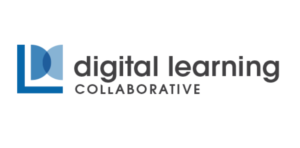When Will Blended Learning Be Mainstream?

By Alan K. Rudi
At the CUE conference this month, a questioner asked our Panel a simple question about blended learning – What is your prediction for when blended learning will be a mainstream application in education?
A simple question, but it does not have an easy answer. First, when we look at the rate of technology adoption (or the number of years a new technology takes to reach 50 percent or more of its targeted users), it is significantly faster today at 25 years than during the last century which averaged 60 years. And information technologies are faster than the average with the PC and cell phone at an adoption rate of about 15 years, and the Internet at about 10 years.
Education technologies like Learning Management Systems, Simulation tools, Games, Online applications, videos, new blended models, etc., are all rapidly emerging now as critical tools demonstrating the ability to improve learning outcomes as quality continues to improve.
So what’s my prediction for when blended learning (which incorporates all kinds of digital tools to a large degree) will become mainstream in education? Here goes – 2015, or just three years from now. It is scary making such a prediction, but here is why I am confident to stick my neck out with this conclusion:
- We are already 10-12 years in to online learning.
- CLRN just released their CA Census of Online/Blended learning and found that 43% of the school districts are using these types of applications with 27% more expected to start next fall.
- Our own schools have taken just 3 years for 54 percent of teachers to incorporate technology into their courses at a level that exceeded the targeted standards.
- Students clearly want change to higher levels of engagement that include the use of technology, but with the leadership and guidance of a teacher.
- While budgets have been cut, there is a growing recognition that the money is not coming back and alternatives must be found. Blended learning enables teachers to be more effective and efficient in delivering learning to students. A negative economic situation has always been a catalyst for change in societies throughout history.
- There are a growing number of examples of education models incorporating technology and teaching, as documented by Horn and Stacker in “The Rise of K12 Blended Learning.”
- Finally, exciting, innovative tools continue to be developed by companies that have a history of rapid adoption – Apple’s iPad, Google’s semantic search, etc.
The trend lines are accelerating. Look out, here it comes.
Alan Rudi is the General Manager of Thesys International , an education business that supports schools with a hybrid online / classroom approach to education. As a Fairmont Education Group company, Thesys represents the culmination of thought, curricular innovation, and evolution of the classroom throughout Fairmont’s 57-year history as a leading educational provider in Southern California. At Thesys we believe in innovating with technology. We believe in kids, and in kids innovating. We believe a new educational model can inspire a new generation of learners. Follow Alan on Twitter at @ThesysIntl.





0 Comments
Leave a Comment
Your email address will not be published. All fields are required.